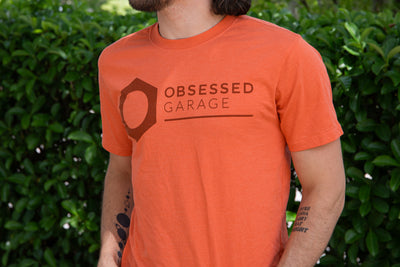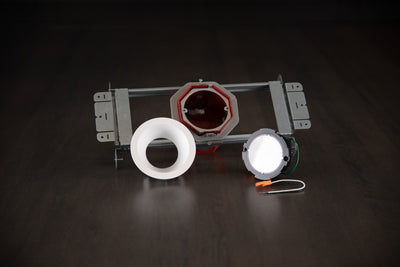What Is The Best Rinseless Wash?

First off, what is Rinseless Wash? It’s simply a method of washing that does not require a hose or pressure washer to obtain a superficial clean on your vehicle with a goal to minimize if not eliminate scratching or marring.
Over the years, I’ve shown you how to wash your car using a traditional pressure washer. It’s still my preferred method but I’ve found that there are times when using a rinseless wash does make sense. ONR (Optimum No Rinse) has been a crowd favorite and a viable product that I’ve carried in my store for many years. But, recently, my guys here have convinced me that McKee's 37 N-914 is indeed the best rinseless wash - so far, I like what I’m seeing.
Application
This is going to be dependent on the conditions of your environment. I live in Florida, where the weather is generally nice, but during hurricane season I can expect it to rain almost every afternoon. In this scenario it becomes more of a burden to pull out my pressure washer, buckets, and tools. So, what I’ll do is make a rinseless solution. Here’s how:
Application 1 - Rinseless Wash - This process entails:
- Using a bunch of plush microfiber towels along with McKee’s N-914
- 1 ounce of N-914 for every 2 gallons of water (1:256), 3 capfuls of N-914 equals one ounce. So, if you're going to use our 6-gallon bucket with the full 6 gallons you'll need 9 capfuls of N-914 or grab yourself a pro blend bottle proportioner
Let’s say you live in Canada where it seems to snow nine months out of the year - I’m going to use a combination of Rinseless and Waterless Solutions without a bucket or hose in my hopefully heated garage.
Application 2 - Waterless Wash/Pre-Soak - This process entails:
- If you want to mix up a pre-soak or waterless wash solution, you'll use 1 ounce of N-914 for every one gallon of water (1:128). That comes to 1.5 capfuls for every gallon of water
-
In this application, we’re using a Transparent 750mL Pressol Bottle with either distilled/filtered water - with roughly two pipettes full of product (that’s about 6mL). Your bottle would have 744mL of water and 6mL of solution. You also have the option of using a hand pump sprayer like the Marolex Industry Ego 1500 or 2000. For the 1500, you would use 11.6 mL of product and 1,488 mL of distilled/filtered water. For the 2000, you would use 15.5 mL of product and 1,984 mL of distilled/filtered water

Paint Protection (PPF) and Coated Cars
If your vehicle has paint protection film (PPF) and/or is ceramic coated, you will find that the Rinseless Wash Application makes for a much better cleaning experience - this is the less concentrated dilution.
If your vehicle is really dirty and doesn’t have a lot of protection, I’d lean towards using my Waterless Wash Application. This same method would apply to spot treating your vehicle (bug removal, etc.).
Here’s a breakdown of my Rinseless Wash Process:
- Soak my microfiber towels in my 6-gallon bucket
- Spray down the surface with my solution - applying a liberal amount
- Take my towel out of the bucket and ring it out but not completely. I want to get the bulk of the water off of it so I don’t make a mess
- Fold the towel in 8ths and wipe the surface down in small sections because I don’t want to go too large and drag the dirt across the surface - your wash flow is to go from top-down
- After completing one section (or panel), I’m going to flip the towel and move onto the next section (panel)
- Once I’ve used all sides of the towel, I’m not going to revisit the bucket. I’m going to toss the towel aside and wash it afterward using a detergent for microfiber towels
Now that I have a damp surface, I need to dry it off. So, what I’ll do is grab my bulk drying towel and dry the surface. What you could do is grab our drying aid to add a layer of protection to the surface during this drying process.
Waterless Wash vs Rinseless
What do we mean when we say Waterless Wash? We’re implying that we don’t have a bucket with water in it. Let’s say you live in an apartment or somewhere where you can’t carry a bucket with you - this would be a safe way to wash as well. Keep in mind that this is the more concentrated application.
Here’s a breakdown of my Waterless Wash Process:
- Spray down the surface or area we want to clean with our pressol bottle. Again, adding a liberal amount of product
- Take a clean/dry towel and fold it into 8ths - with as little pressure as possible, I’m going to wipe the surface. I don’t think this method is as safe but it is a method you can use. I would use this method if I had a dusty car and just wanted to wipe it down. Think a quick wipe down for Cars and Coffee when using this process
With both of these processes, the more product and towels I use means less risk or less chance of damaging the paint.
Benefits of Using a Rinseless or Waterless Wash
- The simplicity of use - it’s super convenient
- It doesn’t leave any residue behind whether you’re coating or waxing
- Fewer tools (no pressure washer, hose, buckets, Mitts)
- Removes more than just dirt. It removes bugs, tree sap, and road tar
- If you care about this kind of crap, it’s better for the environment. No constant running of water



